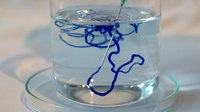
Photo from wikipedia
Abstract A highly stable Ni modified sulfated zirconia catalyst was prepared by two different methods and used for n -pentane isomerization. The results showed that compared with the catalyst prepared… Click to show full abstract
Abstract A highly stable Ni modified sulfated zirconia catalyst was prepared by two different methods and used for n -pentane isomerization. The results showed that compared with the catalyst prepared by the sol-gel method, the catalyst prepared by the hydrothermal method showed higher surface area, larger pore size, smaller crystallite size of tetragonal ZrO 2 , more stable S-containing adsorbed species and a high isopentane yield. In particular, the Ni −/S 2 O 8 2 − -ZrO 2 –Al 2 O 3 , which was prepared by the hydrothermal method (Ni/SZA-R), provided a sustainable high isopentane yield (ca. 68%) with a slight deactivation (15%) only within 50 h of continuous reaction. This result was ascribed to the catalyst's larger mean pore size and the increased concentration of more stable S-containing species formed compared to the catalyst prepared by the sol-gel method. The stability behavior of this Ni/SZA-R catalyst in terms of isopentane yield vs time appears by far larger (increase by a factor of ~ 2–15) compared to other non noble metal modified sulfated zirconia-based catalysts reported in the open literature.
Journal Title: Catalysis Communications
Year Published: 2018
Link to full text (if available)
Share on Social Media: Sign Up to like & get
recommendations!